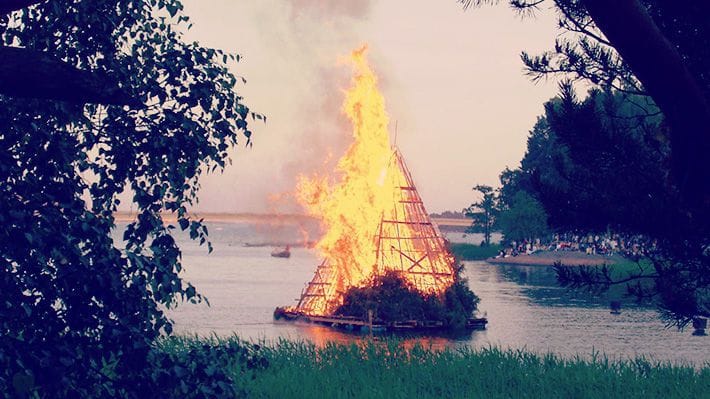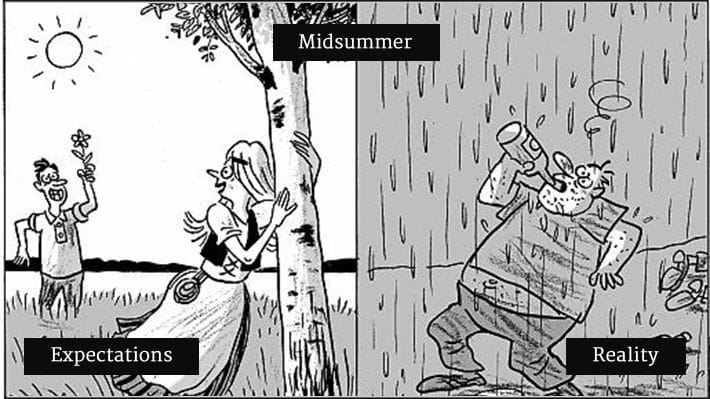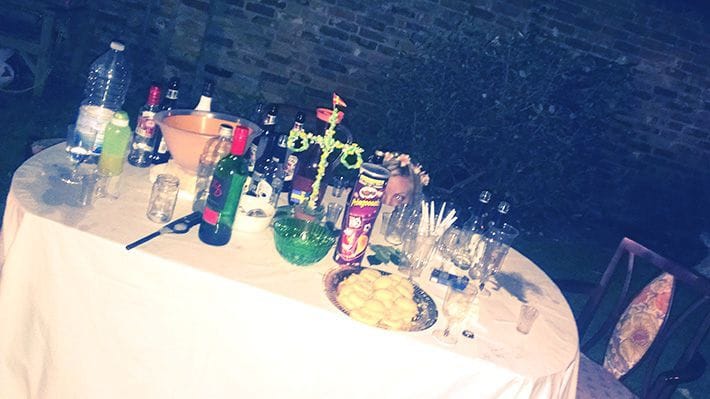Now I’m well aware this is day late but I was busy celebrating midsummer yesterday and was really hungover today. So there you go.
I’ve noticed that I have quite a high readership from United Kingdom and I imagine many of you might not know what midsummer is—the celebration, not the word itself, of course. And with that in mind I would like to present to you;

Midsummer, originally a pagan holiday celebrating the summer solstice—when the day is at its longest and night at its shortest—is still a very important holiday celebrated in many places in Northern Europe, such as Sweden, who once held discussions whether or not to make midsummer their National Day.
Which brings us to Finland, and specifically the region of Ostrobothnia—where I’m from—whose close connections with Swedish traditions and language has always meant that many traditions there—in Sweden—are also traditions here. And nothing more made quite as apparent as the tradition of midsummer. That’s why many things in the previous video apply to Ostrobothnian midsummer celebrations as well.
In folk magic, midsummer was a very potent night and the time for many small rituals, mostly for young maidens seeking suitors and fertility.
Now you might think that good weather is an essential ingredient for this very outdoor-based celebration, but thinking that would make a wimp in the eyes of the weather-braving midsummer celebrants because as the Swedish proverb goes; Det finns inget dåligt väder, bara dåliga kläder—There’s no such thing as bad weather, only the wrong clothes—and staying indoors on midsummer is unthinkable.
Besides, if you get cold—not that you would, would you?—but let’s pretend, all you have to do is snuggle up next to one of the many bonfires that are readily available throughout midsummer.
Which is how we segue into the first of the top 7 important things about midsummer.

7. The Bonfire
Man make fire. Then man burn self on fire. Man stupid. Fire stupid.
The bonfire, having its origin as a means of scaring away evil spirits, is a flourishing midsummer tradition in Finland as families, relatives and most everyone else come together to collectively gather the materials required for creating a large bonfire. Once completed, the bonfires are set alight on midsummer, shining their light across fields and beaches.
There’s a Finnish tongue-twister that nicely sums it up whilst also illustrating how ridiculously difficult Finnish can be to learn, and it goes; Kokoo kokoon koko kokko!, which translates to Gather up a full bonfire!
6. The Folk Magic
Few traditions have lived on so long as that of the superstition that the act of gathering flowers can be exchanged for premonitions of the future.
An unmarried woman will collect seven different flowers and places them under her pillow to dream of her future husband.
The height of summer solstice is believed to be a very potent night for folk magic which is also why, in the old days, maidens would use special charms and bend over a well, naked, in order to see their future husband’s reflection.
You’re probably seeing a theme here, right?

5. The Birch
The birch tree—national tree of Finland—is an important element of midsummer where by placing branches from birch trees on both sides of the front door you welcome visitors of all ages.
The branches of birch trees are also used for beating yourself and your friends when you use a sauna which is much more pleasant than it sounds.
4. The Food
A typical Midsummer menu features different kinds of pickled herring, boiled new potatoes with fresh dill, soured cream and chives. This is often followed by a grilled dish of some kind, such as spare rib or salmon, and for dessert the first strawberries of summer, with cream.
But seeing as pickled herring is bit tricky to get a hold of, especially since I only recently found out that my lovely wife Rebecka actually quite likes the stuff—only on midsummer though—we made do with Swedish meatballs, new potatoes, chicken, chorizo and halloumi cheese. And for once, my barbecuing practices came to good use as I managed—with some assistance by Steve—to make the hottest embers known to man.
And for dessert we had local strawberries with Rebecka’s freshly baked Drömmar—a small shortbread type biscuits that melt in your mouth.
3. The Snapsvisa
A typical snapsvisa is a short, vigorous song; its lyrics usually tell of the delicacy and glory of the drink, or of the singer’s craving for snaps. Snapsvisor are short, bright, and easy to learn.
Possibly the most famous of which, in both Sweden and Finland, is “Helan går”.
Helan—“the whole”—is an expression signifying the first (small) glass of spirit (commonly akvavit or vodka) in a series, and går—“goes (down)”— making this song a salute to the first of the many drinks that are sure to follow.
Helan går
Sjung hopp faderallan lallan lej
Helan går
Sjung hopp faderallan lej
Och den som inte helan trår
Han heller inte halvan får
Helan går
(Drink!)
Sjung hopp faderallan lej
Don’t worry if you don’t know how to sing it—this is a song that lends itself better to those of us who are louder than we are talented.
Of course, no snapvisa would be complete without the alcohol itself and since the only flavoured vodka I could find in the stores was Żubrówka, I had to make my own.
I bought a bottle of Smirnoff vodka and infused it with anise stars, fennel- and cumin seeds and put it in the freezer, taking it out hourly and shaking it vigorously. Usually, you’re supped to let it infuse for a day in room temperature but I didn’t have time for that. But despite my impatience the snaps was awesome.
2. The Maypole
No self-respecting midsummer celebrant would be caught dead without a maypole, or midsummer pole, its importance can be traced back to Germanic paganism of Iron Age and early Medieval times and although the tradition has survived Christianisation, its original meaning has sadly been lost.

The midsummer pole carries with it traditional ring dances, mostly in the form of dances where you are alternating dancing and making movements and gestures based on the songs, such as pretending that you are scrubbing laundry while singing about washing, or jumping as frogs during the song Små grodorna—The little frogs.
In our case, a miniature midsummer pole had to suffice as we weren’t sure how the neighbours would react to a big-ass midsummer pole in the communal garden which sadly meant no dancing around it. Maybe next year.
1. The Family and Friends
Finally, when it all comes down to it, the most important thing about midsummer is spending time together with family and friends.
Because, after all the bonfires have burned down, the folk magic is tapped out, birch branches broken by the beatings, all the food has been eaten, snapsvisor have been sung along with all the alcohol that followed and the midsummer poles have been danced around. After all of that, what do you have left, if not family and friends.
Sure some families are more estranged than others and some might not even be on speaking terms but all these differences are set aside for one night of pagan debauchery and dancing around a phallic symbol pretending you’re a frog, because that’s what midsummer is all about.

And maybe, like in our case, some of that family and friends aren’t even readily available, separated by bodies of water and different time zones.
And it is with that, that the time has come for that video greeting I promised.
Glad midsommar!